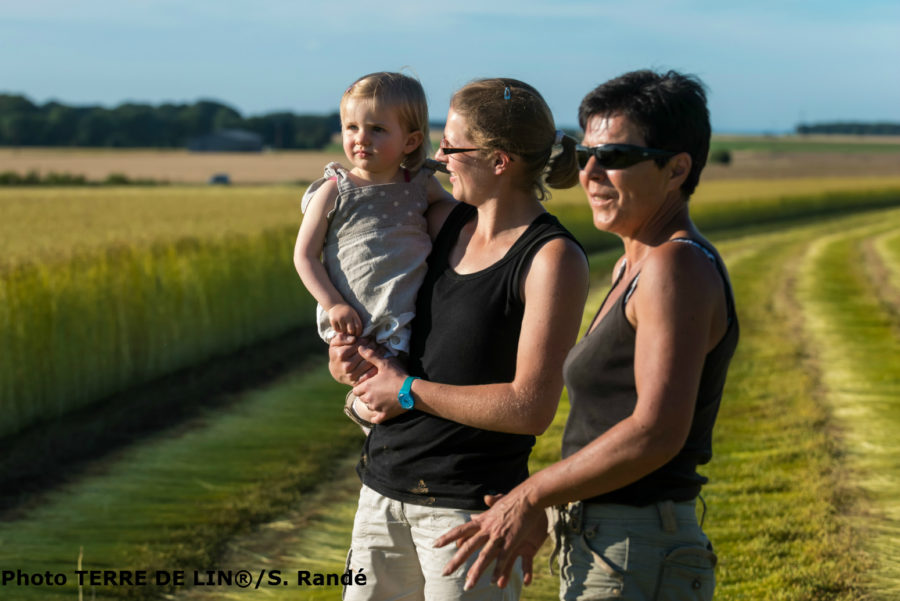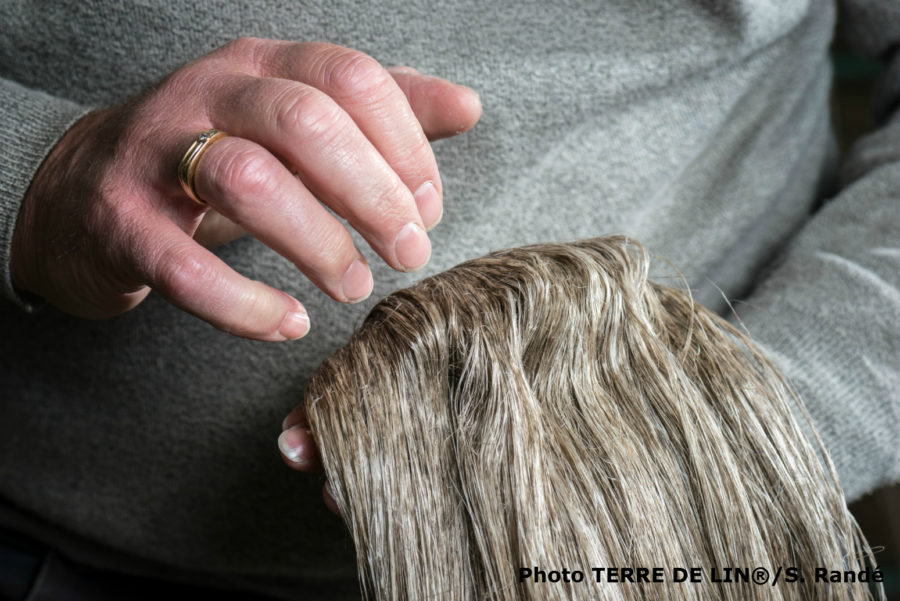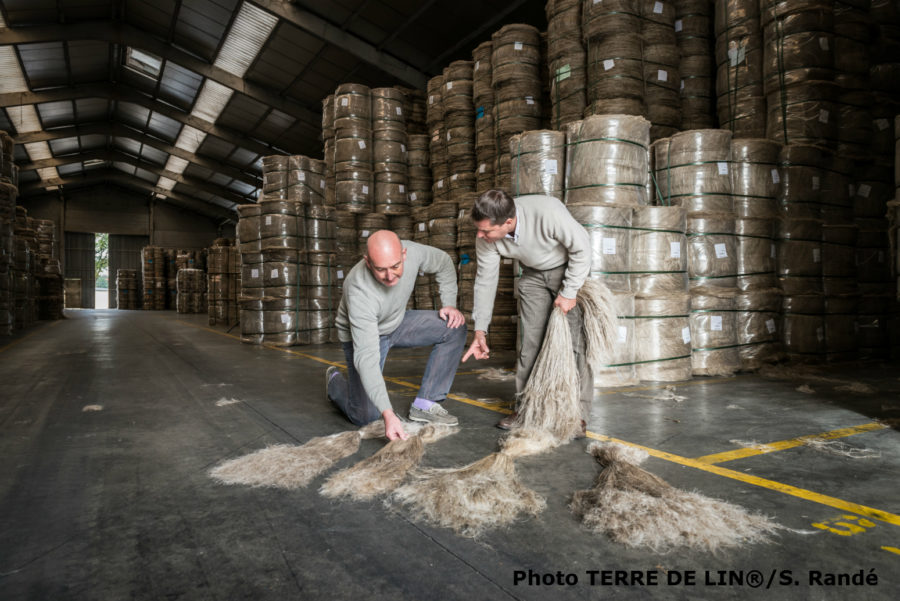Producing quality flax: terroir, know how, control… and passion
Producing quality flax relies on several main assets at the culture and the scutching up to the fiber selection steps.
Normandy, a terroir of excellence for flax
France, Belgium and the Netherlands produce 80% of the global quantities of quality flax.
Normandy accounts for 50 % of the long fiber flax produced in France. It is also a major terroir for flax culture.
– Due to the proximity to the sea, there is an alternance of rain and sunshine, which contributes to an optimal retting of the fibers, especially for fine fibers (to get fine counts)
– Another factor is the soil composition, which is limon and particularly adapted to the flax culture.
Experience, know-how and taking risks
– Flax is a risky culture, a culture of observation: TERRE DE LIN farmers have a specific know-how inherited from father to son.
This know-how starts with the knowledge about the soil characteristics before sowing. Usually, flax will not be sown on the same field for 5 to 7 years. This involves to adapt the crop rotation (which cultures need to be implanted in the field before flax). For example, alfafa is a virtuous culture in the rotation before flax, as its is an excellent source for organic matter and it leaves available nitrogen in the soil. Its powerful root system also helps to clean the field against weeds.
Besides, soil preparation is a key.
– Later on, at the crop stage, the farmer needs sometimes to wait until he reaches the optimal retting level. Patience and regular observation are necessary. This daily attention (sometimes the farmer even comes several times on his field to check the retting) is also linked to passion. In TERRE DE LIN, we cultivate passion for flax.
Very often, the farmer has then to be very reactive for harvesting once the optimal retting level has been reached, otherwise the fiber quality can very quickly degrade.
Therefore, TERRE DE LIN has invested on harvesting material, which is essential to be reactive whenever necessary.

Flax heritage: from mother to daughter
Continuous improvement and innovating on the culture practices
The farmers are paid according to the quality of their fibers. Each year, they receive their results with an explanation connected to the culture so that they can point out improvement focuses in their cultural itinerary for the following year.
At the General assembly, the cooperative gives awards to the farmers that have had the best quality lots so as to encourage this culture of quality.
Strict quality criteria and controls at the scutching stage
Together with its colleagues of the COMLIN Union, TERRE DE LIN has developed a common organization aimed at controlling the quality of the fibers during the scutching step. Two parameters are critical:
– Sorting and and controlling to get homogeneous and clean lots (without remaining straw). Therefore, employees are continuously trained to get the know-how on how to sort and control the fiber lots.
– Fiber classification: to be able to assess the quality of the fibers, a fiber classification has been enforced within COMLIN, taking into account most critical parameters on the fiber for the customers: resistance, strength, colour, fineness, nature and homogeneity.

Assessing the nature of the fiber is one of the 5 criteria in the COMLIN organoleptic classification system
Selection according to customer requirements
Thanks to the fiber classification and to the understanding of customer requirements, an accurate selection is made by TEX NORD.
Customer satisfaction is a priority, which means giving reliability on fiber selection.
As a service, TEX NORD can give further information on the fiber lots so as to help the customers in the choice of the blends for spinning .

An accurate selection of the fibers is made by TEX NORD according to customer requirements


